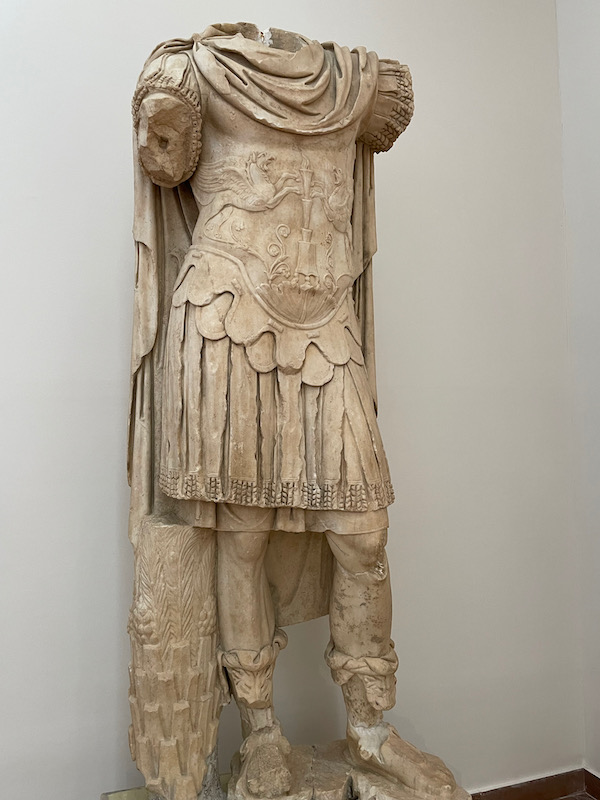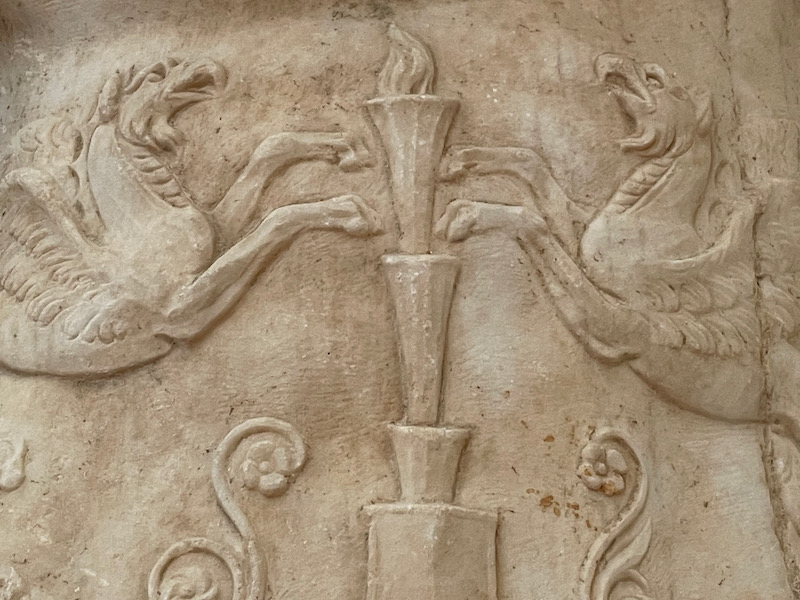Our Blog - Greece 2024 - Ancient Olympia - Museum
The museum that is at the archeologic site contains a set of statues and artifacts from the archeological site as well as a few things that ended up being found during the excavations that date back before the creation of the sanctuary itself. We went through the museum once, then out to the archeological site, then we back to the museum. This allowed us to better picture the pieces that are on display that go to the various buildings and temples.
But I'll start at the older things ... during excavations in 1960, a set of Assyrian bronze sheets were found. These have representations, rendered in relief using a hammering technique, that depict various Assyrian subjects: gods, priests, animals, and horses. They date to the Late Hittite-Assyrian timeframe in the 8th century BC. This would indicate their presence in this area in the 8th and 7th centuries BC, before the sanctuary (remember the oldest temple was the Temple of Hera, build around 590 BC). At the bottom, you can see a procession of 3 bulls, each one escorted by 2 men. Just above that, you can clearly see a bull, and then what is supposed to be a tree, and then there is a lion on the other side but I don't really see much of the lion.
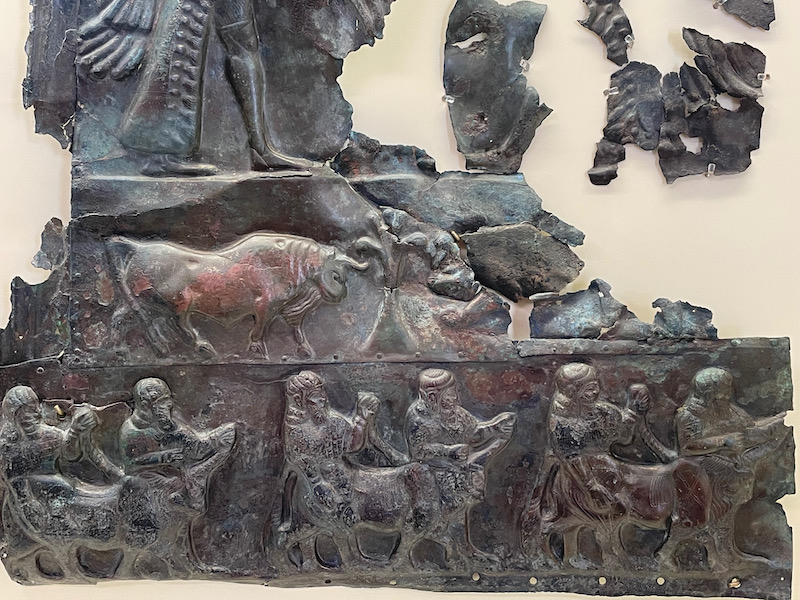
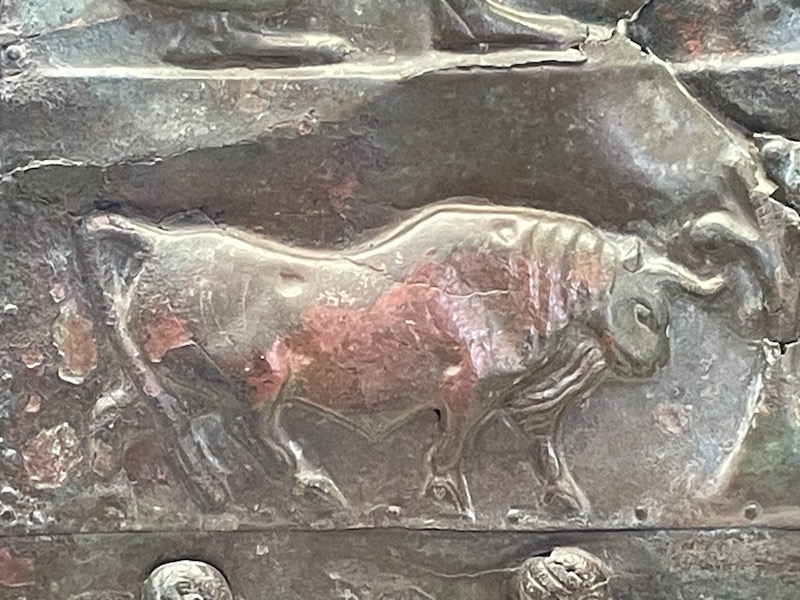
Another bronze sheet in the same case, this one has a small section showing a lion taking down a deer.
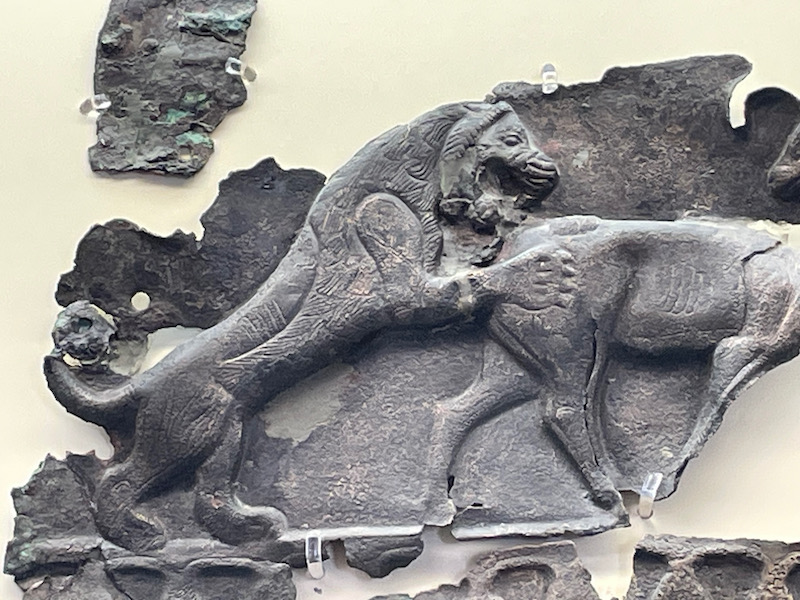
This one didn't come out as good as I had hoped with the glare from the glass, but it is a large bronze lions head that could be mounted somewhere. Supposedly, it would have had inlaid eyes with some type of gemstone, but I think the detail on the nose and whiskers is pretty cool.
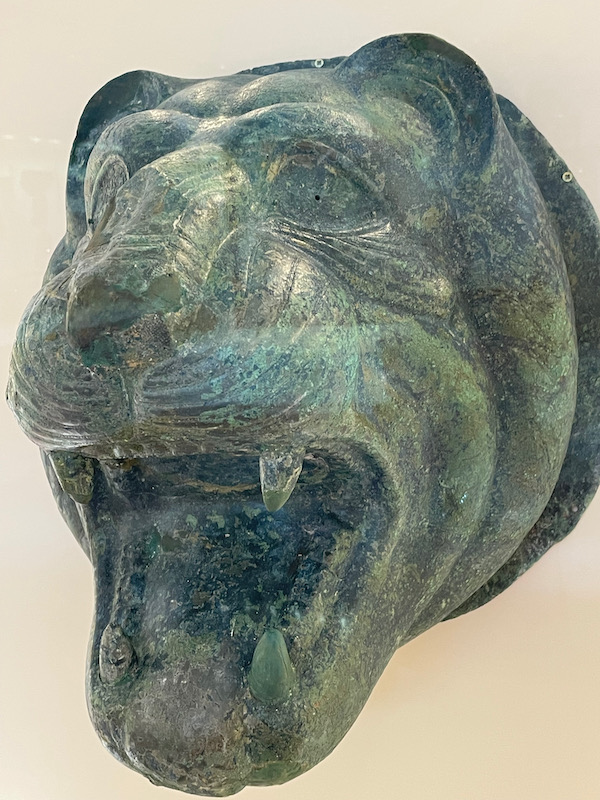
They also found a variety of vessels, mostly pottery, dating back to the end of the 7th and beginning of the 6th century. Some of them, like this first one, was damaged and you can see the reconstructed part (without painting) compared to the original part.
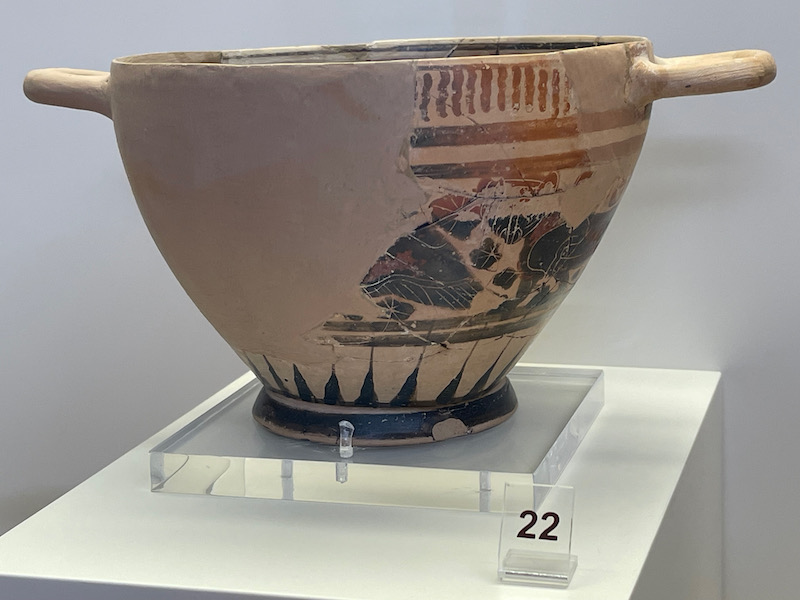
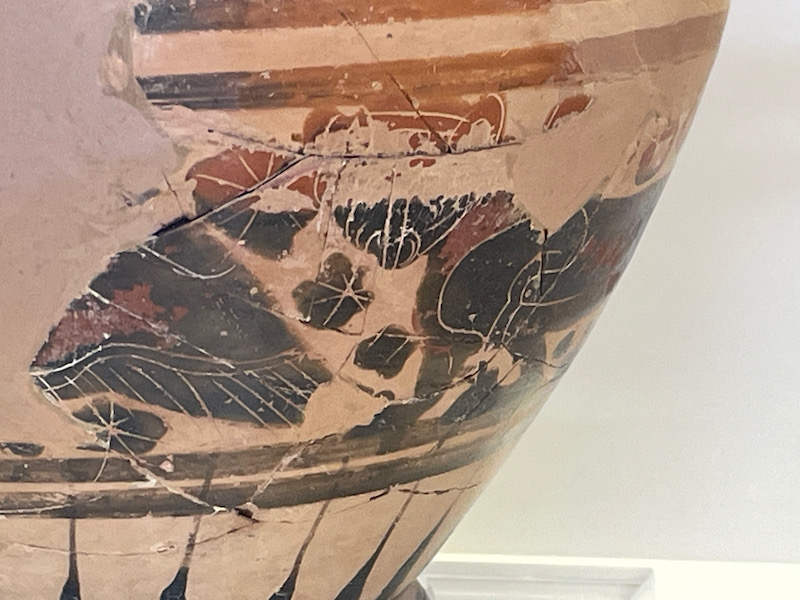
Excavations from a cemetery nearby uncovered blown-glass bottles and vases dating from the 1st to 3rd centuries AD. Most are colorless glass, but to think that around 2000 years ago, they were blowing glass!
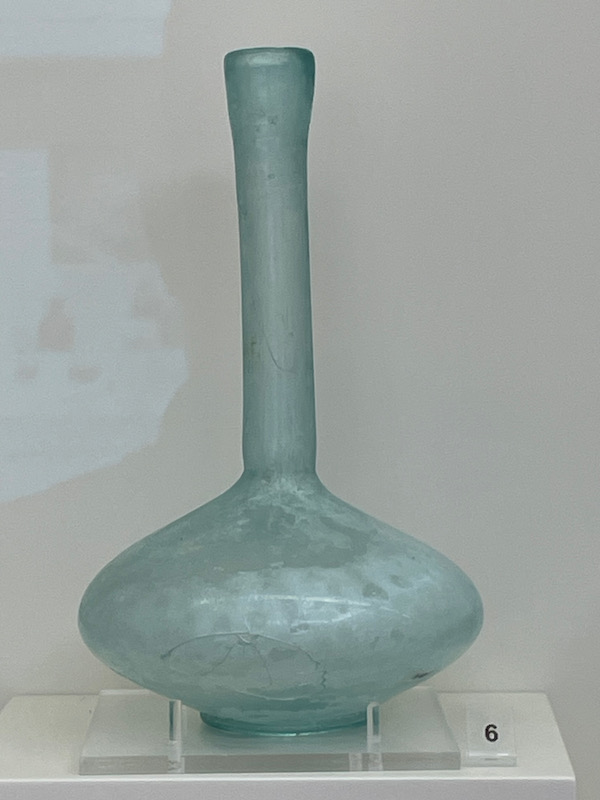
Now we head into the section of the museum devoted to remaining parts of the sanctuary buildings. This display shows some of the terracotta roof sections from the "treasury" buildings that were next to the stadium. Again, the painted parts are original, pieced together with the unpainted parts. In the 2nd century AD, the writer Pausanias mentions the existence of 10 treasury buildings here.
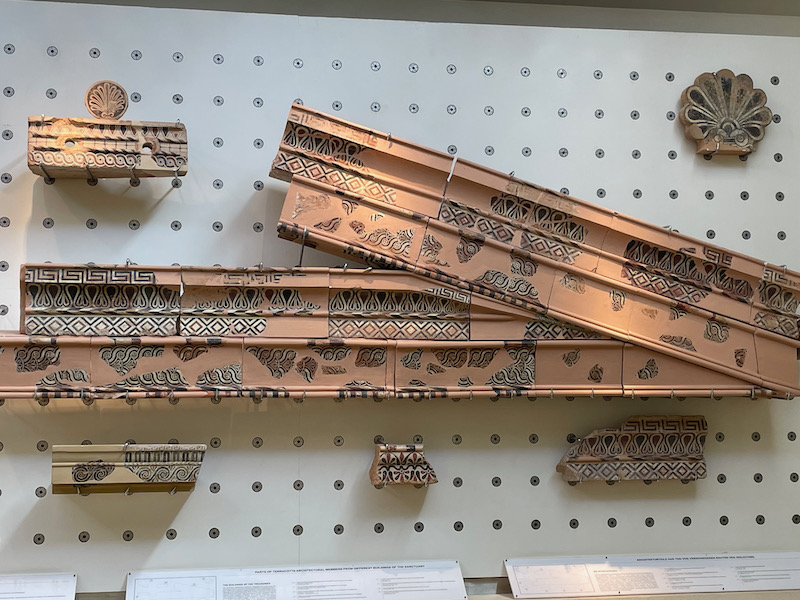
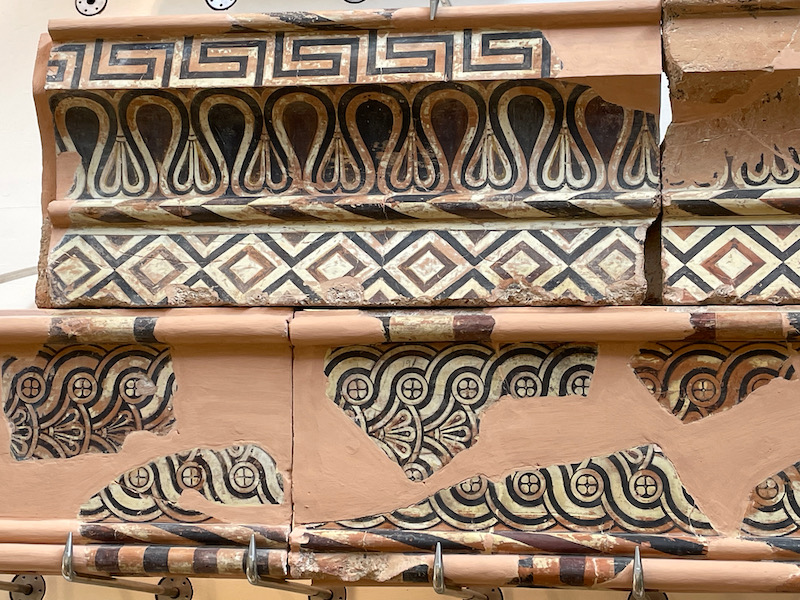
Parts of the pediment of another treasury building, the Treasury of the Megarians, are shown here. There isn't a whole lot of it remaining, but we can see a soldier/fighter, with a shield, looking like he is falling down (bent knee). The middle block at the bottom has writing on it, I show the end part of the inscription, with "EON".
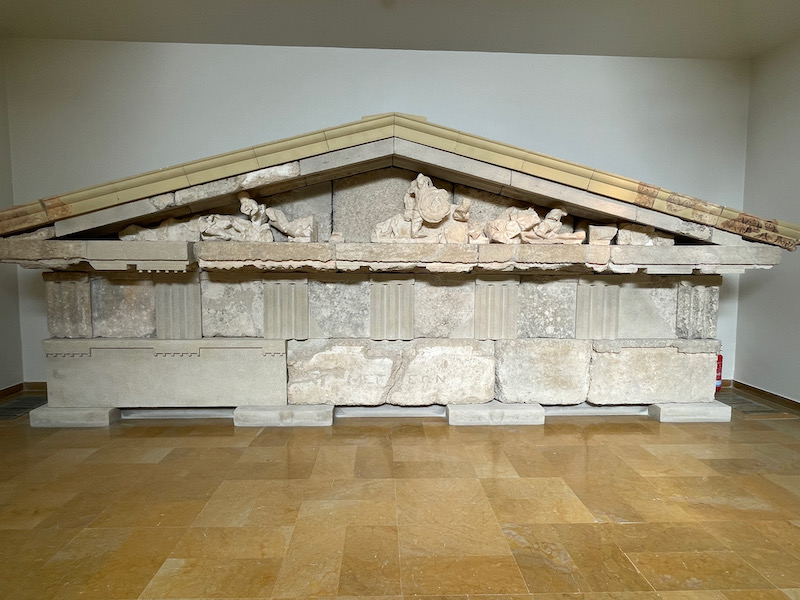
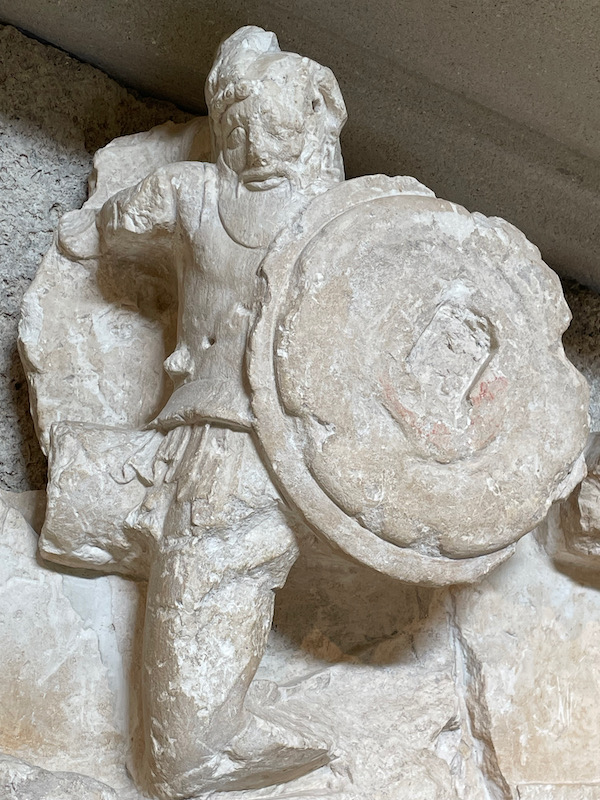
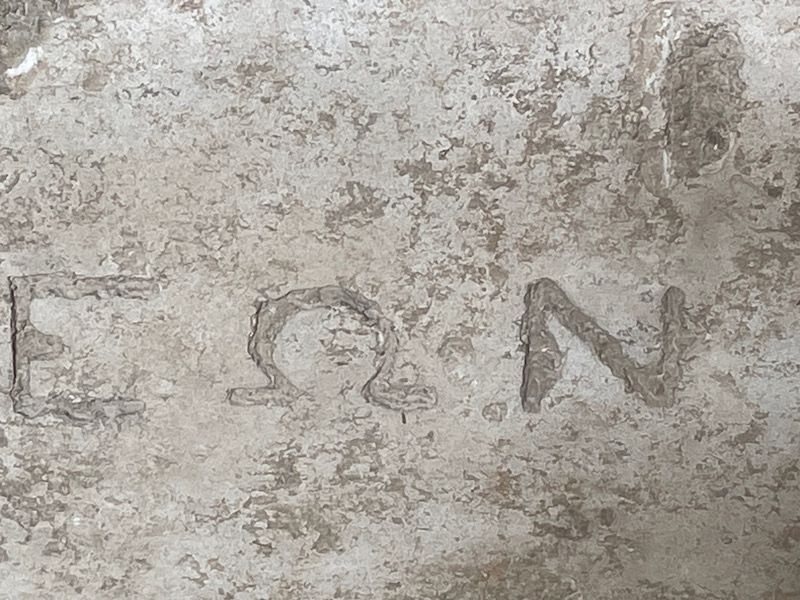
Next to the Temple of Zeus, we saw a triangular base (with me standing next to it). I mention that it was topped with a winged Victory and was to honor the victory of the Messenians and Naupactians over the Spartans in 421 BC. Here is the marble winged Victory that was at the top.
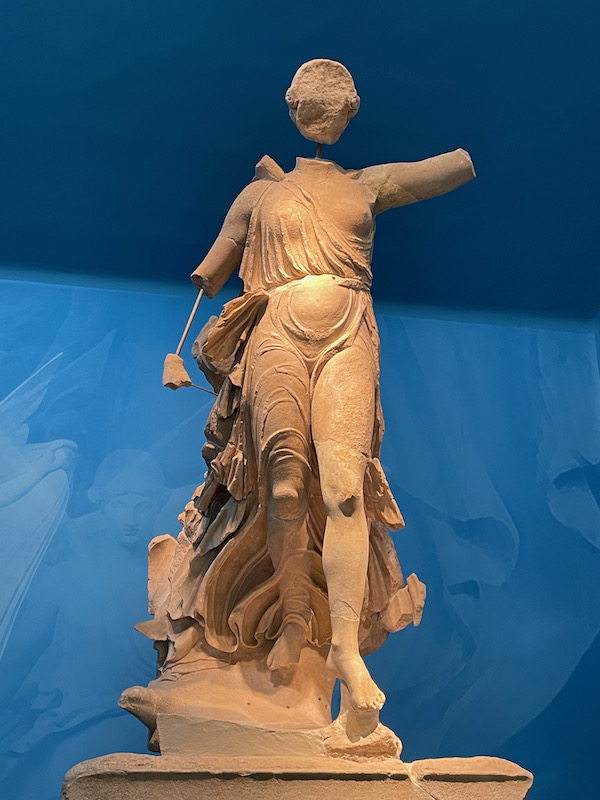
During the excavation of the Temple of Hera in 1877, this marble statue of Hermes of Praxiteles was found. Hermes, the messenger of the gods, is charged by Zeus to take the infant Dionysos to the Nymphs. Historians assume that his raised hand (which is missing) was holding a bunch of grapes, to clearly show that the child is Dionysos, the future God of wine.
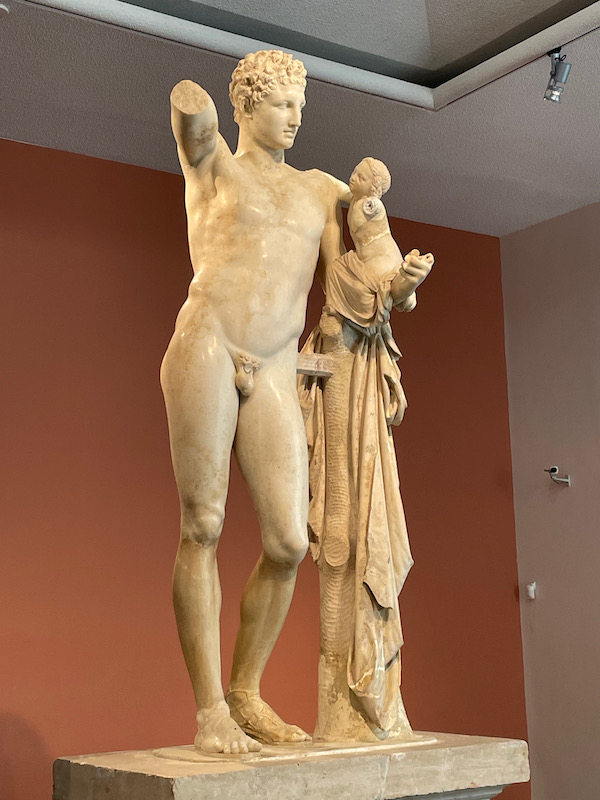
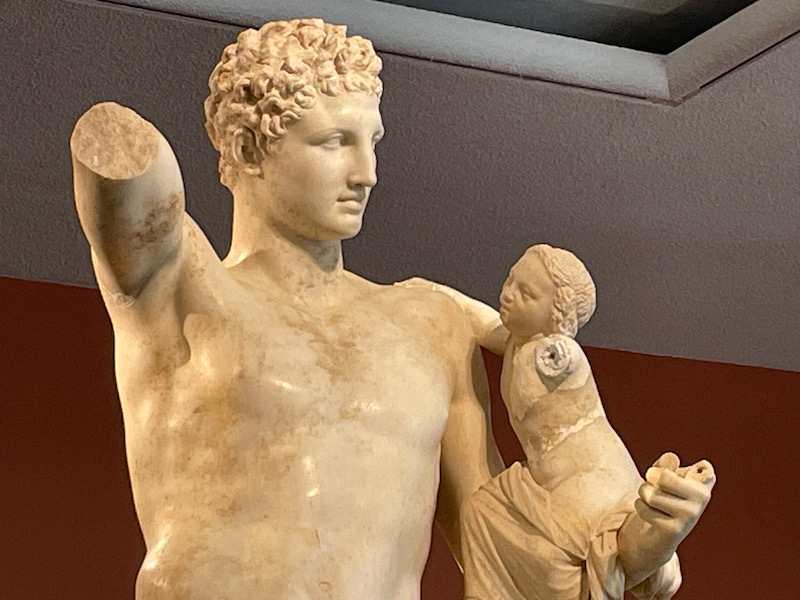
They show both the East and West pediments of the Temple of Zeus. This first is the West pediment, showing a battle between Lapiths and Centaurs, mythical tribes of northern Greece, which took place at a wedding feast. The Centaurs, half horse half man, had been invited to the wedding but drank too much wine and attempted to abduct the Lapith women. In the fight which followed, Apollo stands calmly at the centre while Peirithoös, the Lapith king and bridegroom, leads the attack on the Centaurs. Lapith women watch anxiously from the corners of the pediment. Apollo is the tallest figure in the middle, and then you can see the Lapith women, laying down at the corners (2nd picture). The 3rd picture hopefully is a nice one of the centaur, showing the body of the horse with the torso and bearded face of a man.
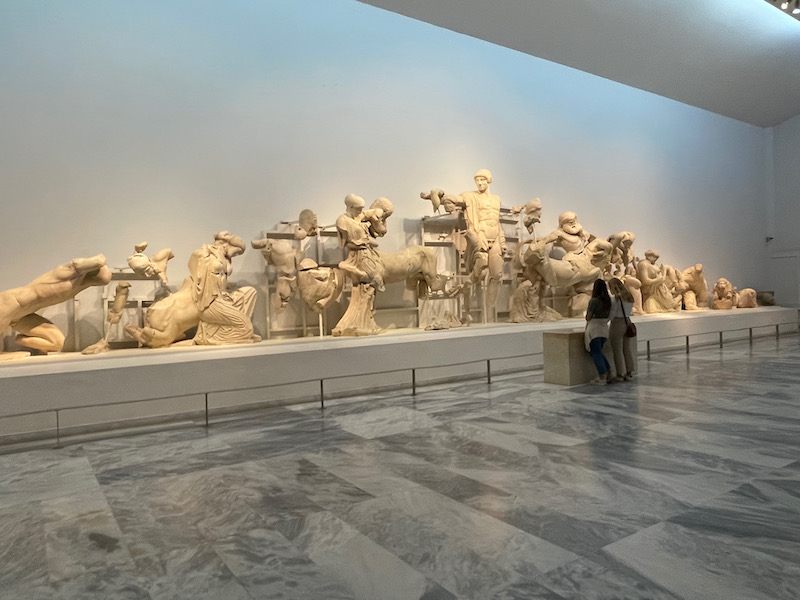
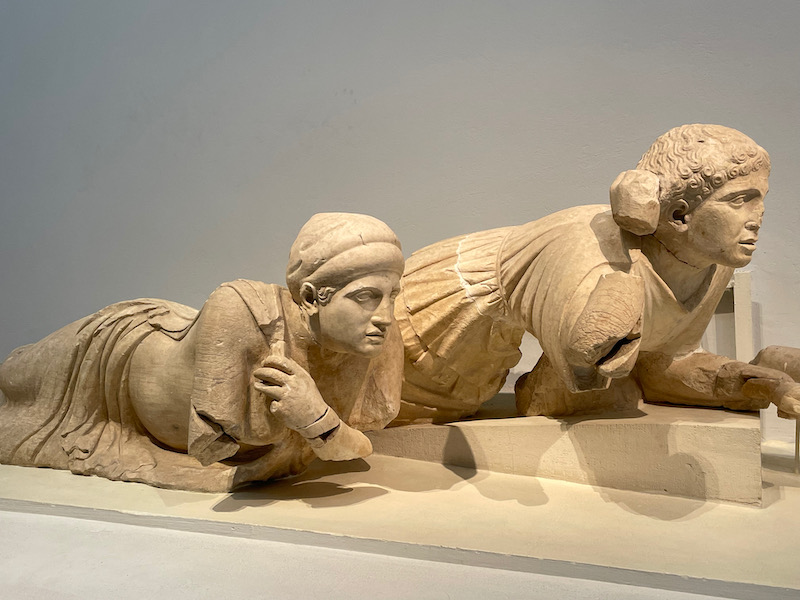
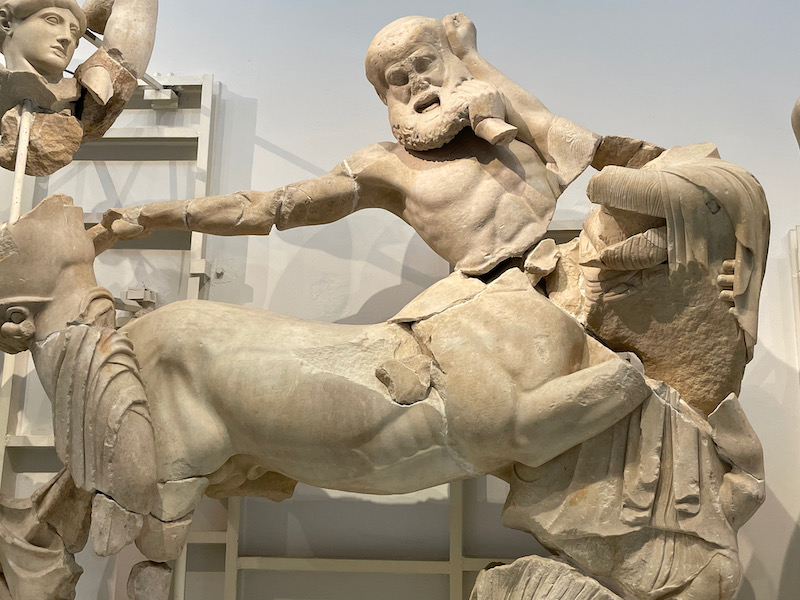
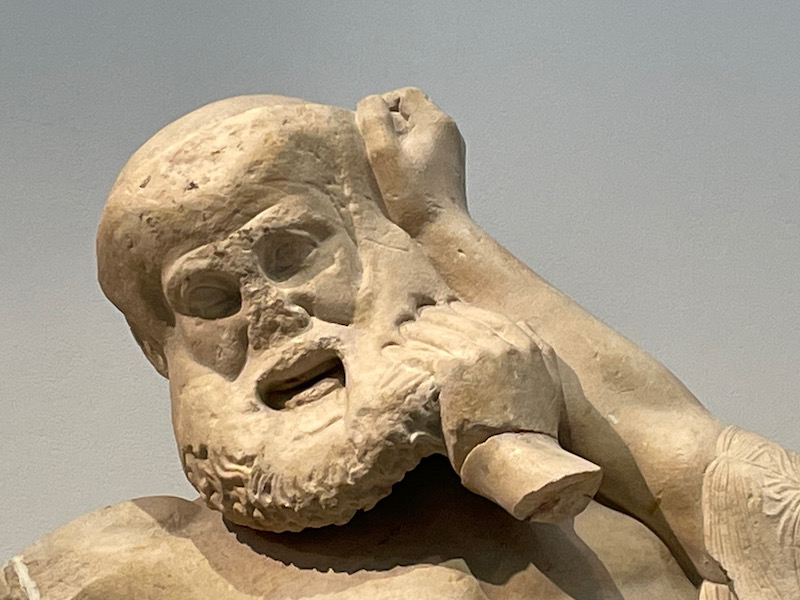
The opposite side, the East pediment, is a much less violent scene than the West pediment. This scene is just before the start of a chariot race, and therefore suits its sporting setting. Pelops challenged Oinomaos to the race in order to marry Oinomaos’s daughter, Hippodameia. He succeeded, but only by cheating. Zeus is in the middle (no head but a bar chest, just in front of where Tom is reading). On either side of Zeus are Oinomaos (left) and Pelops (right). One more to the right, you can make out the pleated skirt of the dress, is the daughter Hippodameia. Then are the horses that Pelops used to win ... er ... win by cheating.
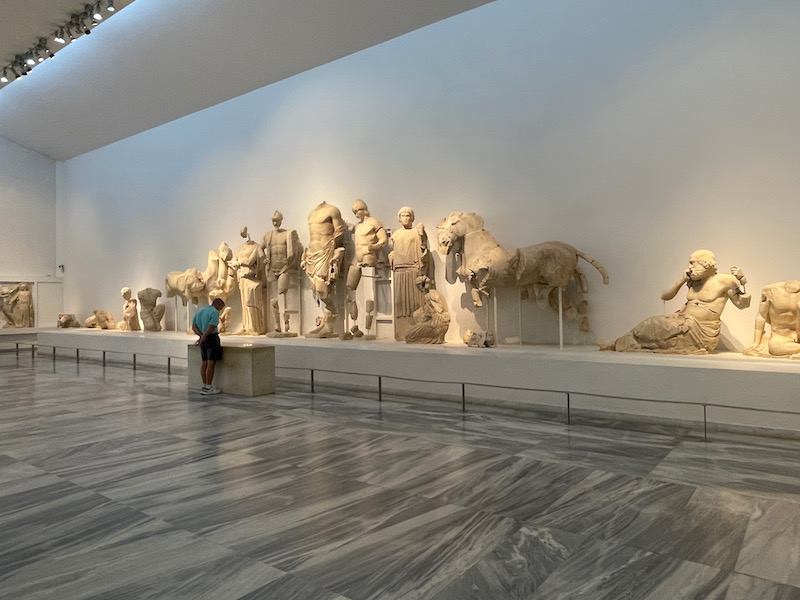
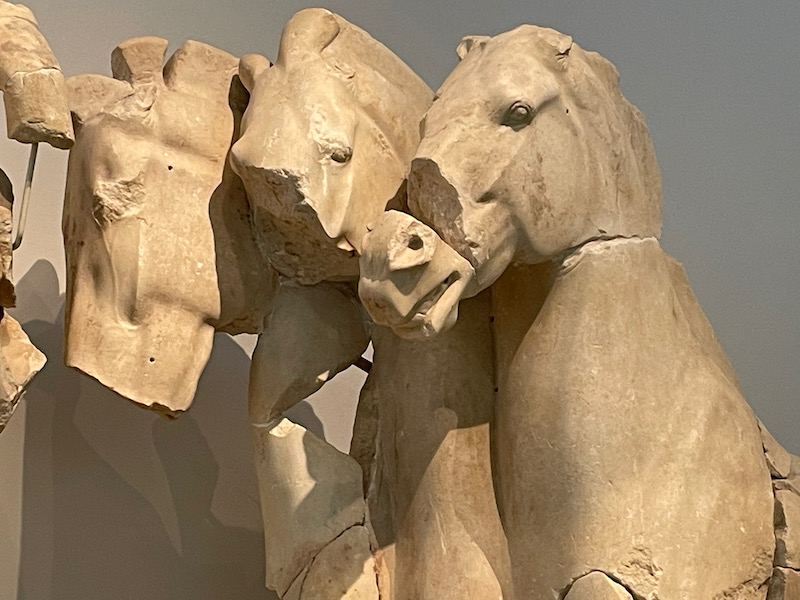
Here is some well-preserved decorations that went around the Leonidaion, the large building with the central courtyard that was built for foreign dignitaries visiting Ancient Olympia. They seem to like to portray lions.
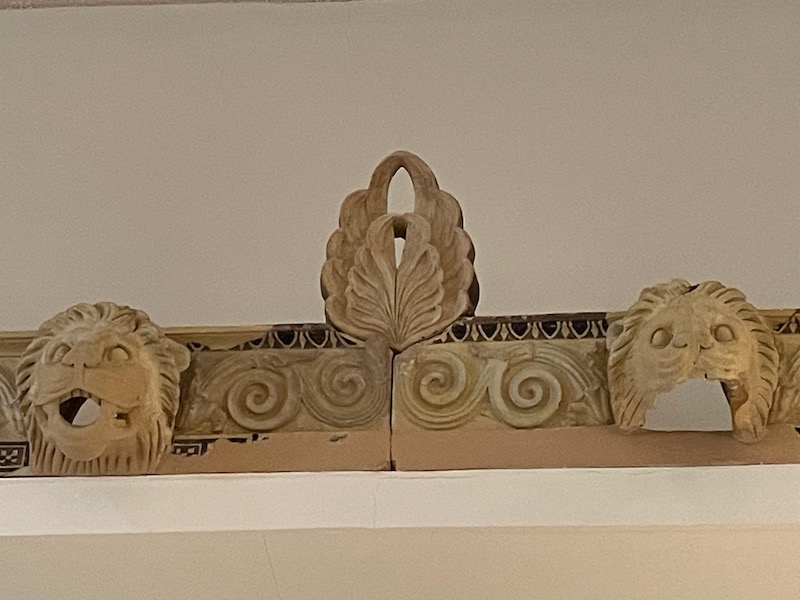
I also mentioned that in the middle of the fountain of the Nymphaion, there was a statue of a bull ... here it is ...
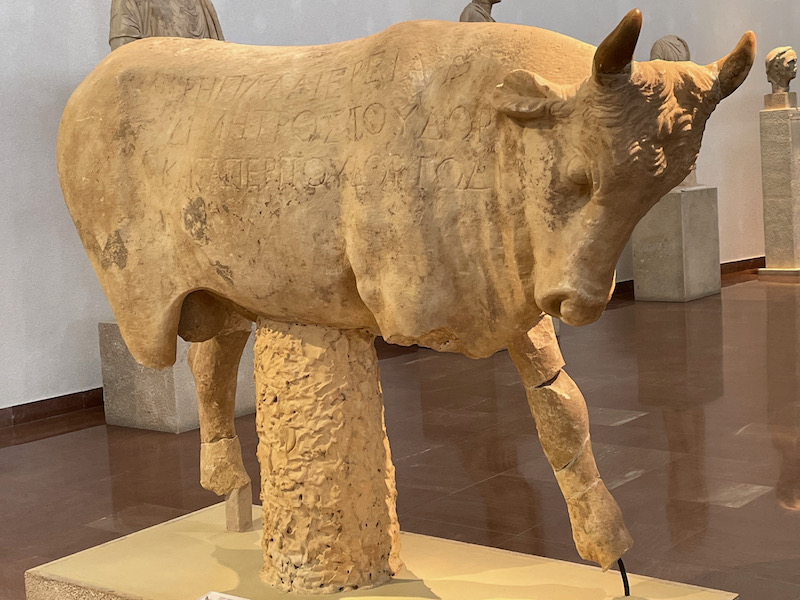
Now we are moving into the Roman period, with a statue that is probably emperor Marcus Aurelius, who ruled from 161 to 180 AD. A little bit of trivia (that seemed left out of movies) ... he married Faustina, who was his cousin but also somewhat his sister since Marcus Aurelius was adopted by Faustina's father, who would bear at least 14 children over the next 23 years. You may remember him, played by Richard Harris, in the 2000 film Gladiator. He is the elderly emperor of Rome who appoints Maximus to be his successor, with the ultimate aim of returning Rome to a republican form of government. He is murdered by his son Commodus before his wish can be fulfilled.
